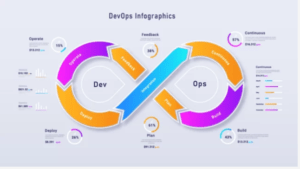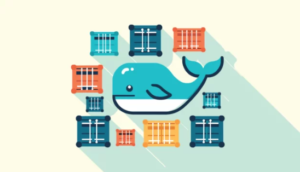Table of Contents
ToggleIntroduction.
In today’s software development landscape, speed, agility, and automation are no longer optional they’re expected. Whether you’re a solo developer shipping a passion project, a startup testing product-market fit, or a small engineering team trying to keep up with rapid iteration, the pressure to deliver fast and often is immense.
That’s where DevOps comes in: a set of cultural practices, tools, and workflows that unify software development (Dev) and IT operations (Ops) into a single, automated process.
DevOps has revolutionized how we build and release software, allowing for shorter development cycles, better product quality, and continuous feedback.
But there’s a growing misconception that in order to implement a “real” DevOps pipeline, you need enterprise budgets, paid cloud services, and a dedicated DevOps engineer. The reality? You can get very far shockingly far without spending a single cent.
This blog is about challenging the myth that good DevOps must be expensive. With the rise of open-source tools, generous free-tier offerings from SaaS platforms, and community-driven innovation, it’s entirely possible to build and operate a robust, secure, and scalable DevOps pipeline using only free tools.
That means version control, continuous integration and delivery (CI/CD), automated testing, build systems, deployment, monitoring, and even infrastructure as code all without paying a dime. Sounds too good to be true? It’s not. But like any system that works within constraints, it requires thoughtful design, awareness of limitations, and a clear understanding of how these free tools fit together in practice.
Free doesn’t mean amateurish. Some of the best tools in the DevOps ecosystem like GitHub Actions, Terraform, Docker, Prometheus, and Netlify offer powerful functionality at no cost, especially for small teams or public projects. These aren’t trial versions or crippled alternatives.
They are production-grade tools used by professionals and hobbyists alike. Free tiers have matured to the point where, for many use cases, they rival paid offerings. GitHub gives you CI/CD workflows with 2,000 free build minutes per month.
Netlify lets you host and deploy full-stack apps with global CDN and preview branches. Docker and Kubernetes can be self-hosted or containerized at no cost. With the right combination of these tools, you can create a pipeline that rivals what large organizations use without spending money upfront.
The benefits of going zero-cost are more than just financial. First, it democratizes DevOps. It empowers anyone with a GitHub account and some command-line knowledge to automate deployments, test code continuously, and monitor production systems.
Second, it encourages best practices from day one. When you work with modular, open, and community-supported tools, you’re more likely to follow patterns that scale, document your infrastructure, and avoid vendor lock-in. Third, it provides a sandbox for learning.
DevOps is not a single skill but a combination of disciplines from CI/CD and scripting to cloud provisioning and observability. Free tools give you the space to explore these without needing a company credit card.
Of course, there are caveats. Free tools often come with usage limits, performance ceilings, and minimal support. Pipelines may be slower. Documentation might be sparse. Some integrations require extra effort. Security and reliability may need additional safeguards.
But these trade-offs are often acceptable or even desirable at early stages of development or for internal tools, educational projects, and non-commercial apps. As your needs grow, you’ll be in a stronger position to know exactly where to invest and why. Starting with free tools gives you that clarity and forces you to prioritize what matters most.
In this blog series, we’ll explore what a modern DevOps pipeline looks like when built entirely from free resources. We’ll map out each stage from code commits to production monitoring and identify the best open-source or free-tier tools for the job.
We’ll cover how to integrate them, where bottlenecks can occur, and how to architect a zero-cost system that’s both effective and maintainable.
We’re not just throwing out a list of tools we’re going to walk through the theory behind each choice, explain how they connect, and share real-world strategies for getting the most out of them without crossing into paid territory.
Whether you’re trying to reduce burn rate, learn the ropes of DevOps without a budget, or teach others the principles of modern deployment, this guide is for you.
So if you’ve ever thought, “I’d love to automate my deployments, but DevOps sounds expensive or complex,” this is your wake-up call. With the right knowledge and the right tools, DevOps doesn’t have to cost anything at all. Let’s prove that together one free tool at a time.
What Is a DevOps Pipeline?
A DevOps pipeline is a structured sequence of automated steps that guide software from the moment it’s written to when it’s deployed and monitored in production.
At its core, it’s the backbone of modern software delivery a system designed to eliminate bottlenecks, reduce human error, and enable fast, consistent releases. The term “pipeline” reflects the linear (yet sometimes parallel) flow of processes involved in building, testing, and deploying applications.
Traditionally, software development was siloed developers wrote code, and operations teams deployed and maintained it. This created friction, delays, and frequent miscommunication.
DevOps emerged to bridge this gap, combining development (Dev) and operations (Ops) into a unified, automated, and collaborative workflow. The pipeline is the implementation of this philosophy.
A typical DevOps pipeline consists of multiple key stages, each responsible for a specific part of the delivery lifecycle. The first stage is source control, where code is managed through systems like Git. This acts as the single source of truth for all changes.
Once code is committed, the next stage is continuous integration (CI) an automated process that pulls in new changes, runs tests, and builds the application.
This ensures that every change is verified early, reducing integration problems down the road. If the code passes the build and tests, it moves into continuous delivery (CD) or continuous deployment, where it’s either prepared for release or automatically pushed to production environments.
DevOps pipelines are often designed using infrastructure as code (IaC), which means even the infrastructure and environments used in the pipeline (like servers, containers, and databases) are defined in version-controlled files. This approach allows teams to create repeatable, consistent environments, reducing the risk of “it works on my machine” problems.
In parallel with the CI/CD flow, pipelines usually include automated testing suites ranging from unit tests to integration, UI, and even performance testing. These act as safety gates, ensuring that new code won’t break existing features or degrade performance.
Modern pipelines also include monitoring and feedback loops. Once code is deployed, tools like Prometheus, Grafana, or cloud-native dashboards help teams observe how the application behaves in production.
This telemetry data on metrics like uptime, latency, and errors feeds back into the pipeline, closing the loop and enabling faster, data-driven decisions. In more advanced implementations, pipelines may also include security scans, compliance checks, and approvals, integrating governance without slowing down delivery.
The ultimate goal of a DevOps pipeline is to enable fast, safe, and repeatable deployments. By automating as much as possible, teams reduce manual errors and free up time for innovation. Instead of fearing deployments, organizations with mature pipelines ship multiple times a day with confidence.
Importantly, pipelines aren’t one-size-fits-all they’re customizable based on project size, team needs, tech stack, and risk tolerance. Whether you’re a solo developer deploying to Netlify or an enterprise using Kubernetes and GitOps, the pipeline adapts to your workflow.
A DevOps pipeline transforms the chaos of manual deployments into a disciplined, automated process that aligns development speed with operational stability.
It’s not just a toolchain it’s a mindset shift, turning code into value at high velocity while maintaining quality, transparency, and resilience. As more teams embrace DevOps, the pipeline becomes the central nervous system of software delivery.
At its core, a DevOps pipeline is a series of automated steps that take your code from development to deployment. A typical pipeline includes:
- Source Control
- CI/CD (Continuous Integration/Delivery)
- Automated Testing
- Build & Artifact Management
- Infrastructure Provisioning
- Monitoring & Logging
- Security & Compliance
A full pipeline stitches all these stages together in an automated, repeatable way.
The Free Toolchain (2025 Edition).
The rise of cloud-native development and open-source collaboration has dramatically expanded what’s possible with free tools. In 2025, you can build an end-to-end DevOps pipeline without ever reaching for a credit card. The modern free toolchain spans every stage of the software lifecycle offering reliable, scalable solutions for teams of any size.
For source control, platforms like GitHub, GitLab, and Bitbucket all offer robust free tiers, complete with collaboration tools, pull requests, and private repositories. Once your code is stored, CI/CD can be handled with GitHub Actions or GitLab CI/CD both offering thousands of build minutes per month for free. CircleCI and Travis CI also have generous free plans, especially for public projects.
For testing, you can use open-source frameworks like Jest, Mocha, PyTest, JUnit, or Cypress for automation, while tools like Codecov or Coveralls provide code coverage analysis on public repositories at no cost.
When it comes to builds and artifacts, Docker remains a cornerstone still free for local development and use with Docker Hub for public images. If you need a more robust registry, GitHub Packages, GitLab Container Registry, and JFrog Artifactory (Community Edition) offer artifact storage options within their free offerings.
For infrastructure as code (IaC), tools like Terraform (Open Source), Ansible, and Pulumi (Community Edition) let you define and manage cloud infrastructure as code, while projects like Minikube or K3s let you simulate Kubernetes clusters locally.
Free hosting options are more powerful than ever: Netlify, Vercel, and GitHub Pages offer automated deployment pipelines for frontend apps, while Fly.io, Render, and Railway allow you to deploy full-stack services with generous free usage limits and easy Git integrations.
To monitor and observe production environments, Prometheus and Grafana (self-hosted) give you detailed metrics and visualization dashboards, while cloud services like UptimeRobot and Better Uptime offer alerting and basic health checks for free. For security, GitHub’s Dependabot automatically scans dependencies for vulnerabilities, while tools like Trivy, Snyk (for open source projects), and OWASP dependency-check integrate security into your pipeline at no cost.
Together, this toolchain covers everything you need: coding, testing, building, deploying, monitoring, and securing your application. While each tool comes with limits build minutes, storage caps, or API request thresholds most are more than sufficient for small teams, MVPs, or learning environments.
By combining these tools strategically, you can replicate the capabilities of enterprise DevOps stacks without spending a dollar, creating a powerful foundation for lean, modern software delivery.
| Stage | Free Tools |
|---|---|
| Source Control | GitHub, GitLab, Bitbucket (Free tiers) |
| CI/CD | GitHub Actions, GitLab CI, CircleCI (Free plans), Jenkins (self-hosted) |
| Testing | Jest, PyTest, JUnit, Selenium, Cypress, Codecov (limited free) |
| Build & Artifacts | Docker (Community), GitHub Packages, Nexus OSS, JFrog Artifactory (Community) |
| Infrastructure as Code | Terraform (Open Source), Ansible, Pulumi (Free tier) |
| Hosting | Fly.io, Render, Netlify, Vercel, GitHub Pages, Railway (Free tiers) |
| Monitoring | Prometheus + Grafana (self-hosted), UptimeRobot (Free), Better Uptime (limited) |
| Security | Dependabot, Snyk (free for OSS), Trivy, OWASP tools |
What Makes “Zero-Cost” DevOps Work?
1. Cloud Is the New Local
You don’t need a data center or even a VPS to run a DevOps pipeline. Many tools run in the cloud on free tiers. Examples:
- GitHub Actions gives you 2,000 minutes/month for free.
- Vercel and Netlify offer CI/CD baked into deployment.
- DockerHub offers limited free storage for public images.
2. Free ≠ Cheap
Using free tools doesn’t mean compromising on quality. Many enterprise-grade platforms offer powerful free tiers or community editions. But free tools often come with:
- Usage caps
- Limited concurrency
- Less support
- Public-only repos or deployments
This is why strategy matters: prioritize what you need early.
3. Everything-as-Code
Use Git to version:
- Infrastructure (IaC)
- CI/CD configs
- Environment variables (via
.envtemplates) - Monitoring setup
This allows even a “free” toolchain to behave like an enterprise stack.
4. Embrace Modularity
Zero-cost DevOps works best when your pipeline is:
- Composable: Mix tools like GitHub Actions + Terraform + Netlify
- Decoupled: Use webhooks and APIs instead of tight integrations
- Portable: Build with containers to move easily between services
Sample Zero-Cost Pipeline
Here’s how a zero-cost DevOps pipeline might look in the real world for a full-stack web app:
- Repo: GitHub
- CI/CD: GitHub Actions
- Tests: Jest (frontend), PyTest (backend), Codecov (coverage)
- Build: Docker image pushed to GitHub Packages
- Infra: Terraform provisioning to Fly.io (free tier)
- Deploy: Auto-deploy from GitHub Actions to Fly.io
- Monitor: UptimeRobot with alerting to Slack
- Security: Dependabot for dependency scanning
All for $0/month.
Trade-Offs & When to Pay.
While building a zero-cost DevOps pipeline is both achievable and powerful, it’s important to recognize that “free” isn’t truly without limits.
Free-tier tools often come with usage ceilings such as limited CI/CD minutes, restricted concurrent builds, reduced storage, or public-only visibility.
These restrictions might be invisible at the prototype stage, but they quickly become constraints as your team grows, traffic increases, or feature demands scale. For instance, GitHub Actions’ 2,000 free minutes per month per repo might suffice for a side project but can quickly become inadequate in a team setting with multiple active branches, frequent commits, and automated test suites.
Similarly, hosting platforms like Netlify, Vercel, or Fly.io offer generous free resources, but they might throttle performance, cap build times, or limit bandwidth once your application gains traction. Free monitoring tools may not store long-term metrics, provide SLA guarantees, or offer real-time alerting with high accuracy something that matters deeply in production environments.
Another major trade-off is support. Free tools usually come with community forums or GitHub Issues instead of dedicated support teams.
When you’re facing a critical bug, waiting for a community response can be a serious blocker. Some tools may also lack robust documentation or offer less enterprise-grade security features such as granular access controls, compliance auditing, or SOC 2-level data handling.
Moreover, as you start integrating more services, the time and complexity of managing your own infrastructure, secrets, runners, or monitoring dashboards can outweigh the initial cost savings. The risk isn’t just downtime it’s developer time lost in troubleshooting, configuring, and optimizing around platform limitations.
That’s when it makes sense to pay. You should consider moving to paid tiers or services when your usage outpaces the free limits, when the cost of failure is high, or when you’re spending more time managing infrastructure than building your product.
Paying also buys you stability, scale, and peace of mind such as faster build queues, private artifacts, role-based access control, dedicated support, and more reliable uptime guarantees. Think of payment not as a defeat of the zero-cost model, but as a strategic upgrade once the value you’re delivering depends on it. Ideally, a zero-cost pipeline should get you to the point where you know exactly what’s worth paying for.
Until then, leverage free tools smartly, understand their boundaries, and scale with confidence when it counts. In DevOps, free gets you started value decides when to invest.
Zero-cost pipelines are amazing but not perfect.
| Limitation | Workaround |
|---|---|
| Limited CI minutes | Use local runners (Jenkins, self-hosted GitHub Actions) |
| No SLA | Be prepared for outages and limited support |
| Public-only features | Make peace with transparency or use secrets cautiously |
| Slow builds | Optimize Dockerfiles and caching layers |
Eventually, you may outgrow free tiers and that’s okay. The point is to start lean and scale intentionally.
Final Thoughts
Zero-cost DevOps isn’t just about saving money it’s about understanding your toolchain deeply, making smart architectural decisions, and proving that agility doesn’t have to come with a big budget.
Whether you’re an indie dev, a bootstrapped startup, or an educator teaching the next generation, you can build a resilient, secure, and automated delivery pipeline for free.
Build smart. Scale later. Spend only when it hurts not to.
What’s Next?
In follow-up posts, we’ll explore:
- Setting up a complete pipeline using GitHub + Terraform + Netlify
- Using GitHub Actions effectively on the free tier
- Securing your DevOps pipeline without spending money
Conclusion.
Building a robust DevOps pipeline doesn’t have to come with a hefty price tag. With the wide array of powerful, open-source and free tools available today, teams can implement a complete CI/CD workflow from source control and automated testing to containerization, deployment, and monitoring without breaking the budget.
Leveraging tools like GitHub, Jenkins, Docker, Kubernetes (via local clusters like Minikube or K3s), and Prometheus/Grafana, organizations can achieve enterprise-grade automation and scalability.
Ultimately, Zero-Cost DevOps is not just a cost-saving approach; it’s a strategic choice that fosters innovation, encourages community collaboration, and empowers teams of any size to deliver faster and more reliably. With thoughtful integration and best practices, free tools can deliver premium results.





